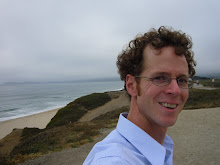We have it on the authority of Thoreau that the best zoning laws are those which zone least. And after nearly a century of modern zoning practice, that concept has at last caught on with our nation’s land use planners and in our collective thinking. After all, it took the aggressive zoning of the last century to give us certain absurdities we now take for granted, like swaths of family homes whose residents can't reasonably leave the neighborhood without a car. Or equally vast commercial areas without a single human resident, equally unnavigable by foot.
Before the era of zoning laws, development was largely unrestricted with regard to use and density, and accordingly, it was dominated by the kind of mixed-use model that land use planners around the country are now working to restore. If you want a community to feel organic, there’s nothing like letting it grow organically. Unless you listen carefully nowadays, you might be led to believe that the new zoning schemes showing up around the country are the product of a new generation of policy prodigies. In fact, the new schemes are in essence just a thoughtful relaxation of past over-regulation. Planning policy is not creating dense mixed-use development, it is finally allowing it. We weren't too dumb all along to want organic communities, it's just that they were illegal.
A migration back to urban areas is already in full swing in many of our large and mid-sized cities; we’re now beginning to embrace that trend in small cities and towns like those that define the Rogue Valley. Communities like ours have the best opportunity to become the sort that will thrive in the future. We exist on a reasonable scale and we're still connected to the land that surrounds us. We have farms and public venues and first-class recreation and enough good water, if we use it responsibly. We can make many of our own commodities and accommodate most of our own waste, if we create it responsibly.
Let me pause to say that if you are committed to rural living in our valley, by all means carry on. But in that case, your contribution to the livability of our valley should be through becoming truly committed to that life, and not trying to simulate suburban living in a rural setting. Rural life may mean having chickens or a productive garden. It may mean working or exercising at home. It will certainly mean combining or sharing automobile trips into town. Remember that denser development in urban areas is vital for preserving rural areas.
Our valley's future will be determined by our decisions about what we eat, how we work, and where we recreate—but no choice is more powerful than where we live within our valley. If there is a move in your near future, you have a chance to lead the way. In the next decade our small cities can experience the same redevelopment patterns of larger re-urbanizing cities and benefit from a resulting quality of life not surpassed anywhere. Don’t doubt that property values will follow. But we’re being reminded powerfully that property values giveth and property values taketh away. Let's instead make our decisions based on livability, which will in turn create value.
When zoning laws don't restrict unduly, developers will build what we demand. And they'll be building a lot; estimates from the state indicate that Jackson County will need to double its residential and commercial buildings before 2030. Let's demand—that is, let's rent and buy—the right things. Namely, housing mixed with the kind of commercial services we use in an average week. Homes near parks and grocery stores and our jobs. Offices served by public transit. And more than anything else, let's demand that our investment in public transportation infrastructure prioritize the best modes of travel, walking and cycling, above all others. One way to demand these values in our future development is to buy or live in a part of town designated a "Transit Oriented Development," or TOD. Municipalities across the Rogue Valley are designating areas as TODs, where new development will encourage organic mixed use and require improved accessibility by foot, wheelchair, stroller, and bicycle. Ask your real estate agent to show you homes in the TODs first.
Oregon's land use planners have always been ahead of the curve, and our decisions make land use planners of us all. There's little question that the ability to live well close to home will be a great asset in the near future. As for me, I'm planning now.
Subscribe to:
Post Comments (Atom)

No comments:
Post a Comment